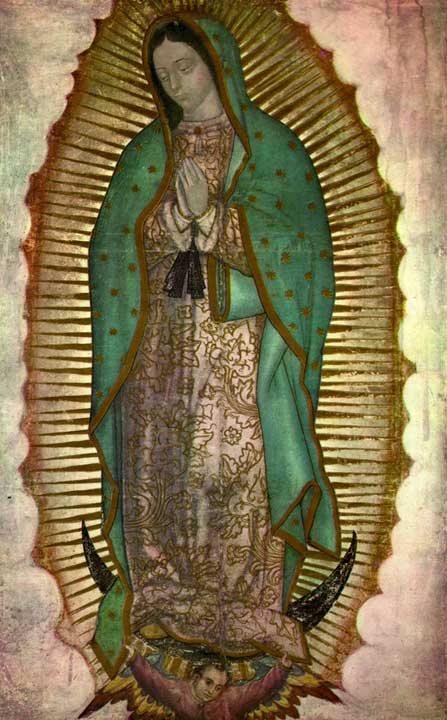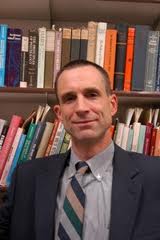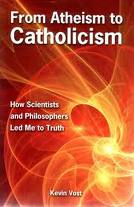
Lady of Guadalupe — Presentation Transcript
1. Discoveries about the tilma of the Virgin of Guadalupe Empress of America Andre Fernando Garcia click anywhere on page to continue
2. Would you like to read something that will not only surprise you, but change your way of thinking forever? Then, read what science has discovered about the tilma of the Virgin of Guadalupe:
3. 1. Ophthalmalgic studies made on the eyes of Mary detected that when the eye is exposed to light, the retina contracts, and when the light is withdrawn, it returns to a dilated state, just as happens with a living eye.
4. 2. The temperature of Juan Diego’s tilma, made of a material that comes from fibers of the maguey cactus, maintains a constant temperature of 98.6 degrees, the same as that of a living human body.
5. 3. One of the doctors who analyzed the tilma placed his stethoscope below the black band at Mary’s waist, and heard rhythmic beats at 115 pulses per minute, the same as that of a baby in the maternal womb.
6. 4. No sign of paint has been discovered on the tilma. From a distance of 3-4 inches from the image, one can see only the maguey cactus fibers of the material: the colors disappear. Scientific studies have not been able to discover the origin of the coloration, nor the way the image was painted. They cannot detect vestiges of brush strokes or any other known painting technique. NASA scientists confirm that the paint material does not belong to any known element on earth.
7. 5. When the material was examined under a laser ray, it was shown that there is no coloration on the front or the back of the cloth, and that the colors hover at a distance of 3/10 th of a millimeter (1/100 th of an inch) over the cloth, without touching it. The colors actually float above the surface of the tilma. Isn’t that amazing?
8. 6. The rough material of the tilma has a lifespan of no more than 20-30 years. Several centuries ago, a replica of the image was painted on an identical piece of maguey cloth, and it disintegrated after several decades. Nonetheless, during the almost 500 years of the miracle, the cloth with the image of Mary remains as strong as it was on the first day. Science cannot explain why the material has not disintegrated.
9. 7. In the year 1791, muriatic acid accidentally spilled on the upper right side of the tilma. During the period of 30 days, without any special treatment, the affected fabric re-constituted itself miraculously.
10. 8. The stars that appear on the Mantle of Mary reflect the exact configuration and positions that could be seen in the sky of Mexico on the day the miracle happened.
11. On the right side of the Virgin’s mantle, the southern constellations are indicated: At the top are four stars that form part of the Orphiuchus constellation. Below it to the left, one finds Libra , and to its right, at what seems an arrow point, is the beginning of Scorpio. In the middle are the constellations of Lupus and to its left, an end point of Hydra . Further down, one can clearly see the Southern Cross ; above it appears the slightly inclined square of the Centaurus constellation.
12. On the left side of the Virgin’s mantle one sees the northern constellations: At her shoulder, a fragment of the stars of the Herdsman constellation; below it and to the left is the Great Bear . To its right is Berenice’s Hair ; below it, Hunting Dogs , and to its left, the Thuban , which is the brightest star of the Draco constellation. Below the two parallel stars (which still form part of the Big Bear), one finds stars from another pair of constellations: the Auriga and at the bottom, three stars of Taurus . Thus, in their totality and proper places, the 46 most brilliant stars that can be seen on the horizon of the Valley of Mexico are identified.
13. 9. In the year 1921, a man concealed a high power bomb in a flower arrangement, and placed it at the feet of the tilma. The explosion destroyed everything around it, except for the tilma, which remained intact.
14. 10. Scientists discovered that the eyes of Mary have the three refractive characteristics of a human eye.
15. 11. In the eyes of Mary (only about 1/3 rd inch in size), miniscule human figures were discovered that no artist could have painted. The same scene is repeated in each eye. Using digital technology, the images in the eyes were enlarged many times, revealing that each eye reflected the figure of the Indian Juan Diego opening his tilma in front of Bishop Zumarraga. Do you know the size of this scene? One fourth of a millimeter (1/100 th of an inch).
16. It is evident that all these unexplainable things were given to us for a reason: To catch our attention. Have they caught yours?
17. To close, let us look at three surprising facts: 1. In the Indian language, “Guadalupe” means to “crush the head of the serpent.†It properly refers to Genesis 3:15: Mary, the conqueror of evil. 2. The image also depicts a detail from Apocalypse 12: “And a great sign appeared in Heaven: A woman clothed with the sun and the moon under her feet.†3. The Virgin wears a black band at her waist, which symbolizes pregnancy, to indicate that God wanted Jesus to be born in the three Americas, in the heart of each American. “ While I live I will praise the Lord: I will sing praise unto my God while I have any being†(Ps 146:2).
18. This presentation has the single purpose of demonstrating to you that the Virgin will be with you always, whenever you need her, that she will never abandon you, and that you will always be her special son or daughter. Never forget the words she spoke to Juan Diego : My little child, the smallest of all, let nothing afflict you. Do you not know that you are in my lap? Am I not here, I, who am your mother?
Tags: Guadalupe Presentation Transcript, Indian Juan Diego, mexico, mother, NASA, our lady of guadalupe, science
This entry was posted on Thursday, December 12th, 2013 at 1:45 am
You can follow any responses to this entry through the RSS 2.0 feed.
From Vatican Radio – Pope Benedict XVI met with participants of the International Conference
“Adult Stem Cells: Science and the Future of Man and Cultureâ€, sponsored by the Pontifical Council for Culture. In his address, the Holy Father spoke about the “truly remarkable contributions†science can make to promoting and safeguarding human dignity. At the same time, he warned that scientists must be attentive to ethical concerns in pursuing their research, so that the inviolable dignity of each human being is never compromised.
[powerpress = “Vatican_Radio”]
Below is the full text of the Holy Father’s remarks:
Dear Brother Bishops,
Your Excellencies, Distinguished Guests,
Dear Friends,
I wish to thank Cardinal Gianfranco Ravasi, President of the Pontifical Council for Culture, for his kind words and for promoting this International Conference on Adult Stem Cells: Science and the Future of Man and Culture. I would also like to thank Archbishop Zygmunt Zimowski, President of the Pontifical Council for Pastoral Care of Health Workers, and Bishop Ignacio Carrasco de Paula, President of the Pontifical Academy for Life for their contribution to this particular endeavour. A special word of gratitude goes to the many benefactors whose support has made this event possible. In this regard, I would like to express the Holy See’s appreciation of all the work that is done, by various institutions, to promote cultural and formative initiatives aimed at supporting top-level scientific research on adult stem cells and exploring the cultural, ethical and anthropological implications of their use.Scientific research provides a unique opportunity to explore the wonder of the universe, the complexity of nature and the distinctive beauty of life, including human life. But since human beings are endowed with immortal souls and are created in the image and likeness of God, there are dimensions of human existence that lie beyond the limits of what the natural sciences are competent to determine. If these limits are transgressed, there is a serious risk that the unique dignity and inviolability of human life could be subordinated to purely utilitarian considerations. But if instead these limits are duly respected, science can make a truly remarkable contribution to promoting and safeguarding the dignity of man: indeed herein lies its true utility. Man, the agent of scientific research, will sometimes, in his biological nature, form the object of that research. Nevertheless, his transcendent dignity entitles him always to remain the ultimate beneficiary of scientific research and never to be reduced to its instrument.
Tags: adult stem cell research, catholic, catholic podcast, catholic prayer, cathollc spirituality, embroynic stem cell research, Pontifical Council for Culture, pope benedict, pope benedict xvi, science, scientific research, Vatican Radio From Vatican Radio
This entry was posted on Saturday, November 12th, 2011 at 7:56 am
You can follow any responses to this entry through the RSS 2.0 feed.
 Episode 2- What is the relationship between religion and science?
Episode 2- What is the relationship between religion and science?
[powerpress]
 Question 1 Article 2. Whether sacred doctrine is a science.
Question 1 Article 2. Whether sacred doctrine is a science.
Objection 1: It seems that sacred doctrine is not a science. For every science proceeds from self-evident principles. But sacred doctrine proceeds from articles of faith which are not self-evident, since their truth is not admitted by all: “For all men have not faith” (2 Thess. 3:2). Therefore sacred doctrine is not a science.
Objection 2: Further, no science deals with individual facts. But this sacred science treats of individual facts, such as the deeds of Abraham, Isaac and Jacob and such like. Therefore sacred doctrine is not a science.
On the contrary, Augustine says (De Trin. xiv, 1) “to this science alone belongs that whereby saving faith is begotten, nourished, protected and strengthened.” But this can be said of no science except sacred doctrine. Therefore sacred doctrine is a science.
I answer that, Sacred doctrine is a science. We must bear in mind that there are two kinds of sciences. There are some which proceed from a principle known by the natural light of intelligence, such as arithmetic and geometry and the like. There are some which proceed from principles known by the light of a higher science: thus the science of perspective proceeds from principles established by geometry, and music from principles established by arithmetic. So it is that sacred doctrine is a science because it proceeds from principles established by the light of a higher science, namely, the science of God and the blessed. Hence, just as the musician accepts on authority the principles taught him by the mathematician, so sacred science is established on principles revealed by God.
Reply to Objection 1: The principles of any science are either in themselves self-evident, or reducible to the conclusions of a higher science; and such, as we have said, are the principles of sacred doctrine.
Reply to Objection 2: Individual facts are treated of in sacred doctrine, not because it is concerned with them principally, but they are introduced rather both as examples to be followed in our lives (as in moral sciences) and in order to establish the authority of those men through whom the divine revelation, on which this sacred scripture or doctrine is based, has come down to us.
For an online version of St. Thomas Aquinas’ “Summa” click here
“Christian Apologetics with Dr. R. R. Reno” explores numerous facets of faith and reason in the life of the Church and the world. Grounded on the work of giants, such as St. Thomas Aquinas, St. Bonaventure, Blessed John Newman, soon-to-be Blessed John Paul II, G. K. Chesterton, Blaise Pascal and Stephen Barr, Dr. Reno helps us to open our minds to make the journey to our hearts.
R. R. Reno is the editor at First Things: A Journal of Religion, Culture, and Public Life, and Professor of Theology, currently on leave from Creighton University. His theological work has been published in many academic journals. Essays and opinion pieces on religion, public life, contemporary culture, and current events have appeared in Commentary, and the Washington Post. In Fighting the Noonday Devil Reno suggests that putting ourselves at the disposal of what is real is what trains us for true piety. His other recent books include Genesis: Brazos Theological Commentary on the Bible and Sanctified Vision: An Introduction to Early Christian Interpretation of the Bible.
Tags: catholic, catholic podcast, catholic prayer, cathollc spirituality, christian apologetics, creighton university, faith, first things, r r reno, relationship, religion, science, st thomas aquinas, summa theologica
This entry was posted on Monday, May 23rd, 2011 at 12:11 am
You can follow any responses to this entry through the RSS 2.0 feed.
A shining example of how reason and science can lead to faith. Dr. Kevin Vost is a cradle Catholic, who fell into aethism at the age of 17. He would stay there for over 2 decades, until gradually through reasoned enlightenment (showered with God’s grace) the fallacy in aethistic philosophy was revealed and the glory of real Truth became known. Wonderful read…the journey really can be made from the head to the heart, just ask Dr. Kevin Vost!
Catholic, who fell into aethism at the age of 17. He would stay there for over 2 decades, until gradually through reasoned enlightenment (showered with God’s grace) the fallacy in aethistic philosophy was revealed and the glory of real Truth became known. Wonderful read…the journey really can be made from the head to the heart, just ask Dr. Kevin Vost!
[powerpress]
Pick up a copy of Kevin’s book
Be sure to visit Dr.  Kevin Vost’s website
Tags: aethism, catholic, catholic podcast, catholic prayer, catholicism, cathollc spirituality, Dr. Kevin Vost, faith, heart, kevin gast, Kevin Vost, osv, our sunday visitor, philosophy, psychology, science
This entry was posted on Wednesday, September 22nd, 2010 at 11:59 pm
You can follow any responses to this entry through the RSS 2.0 feed.

